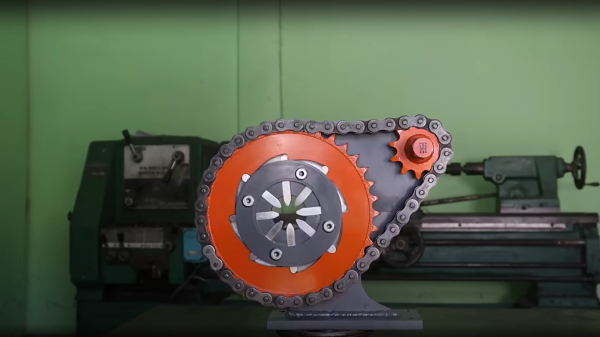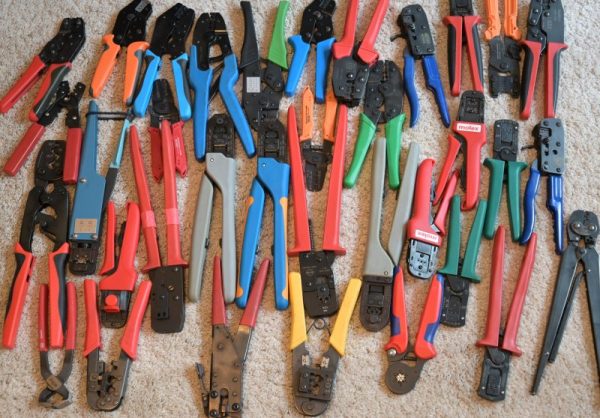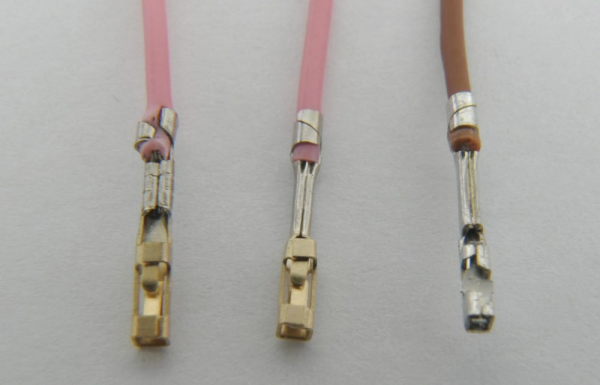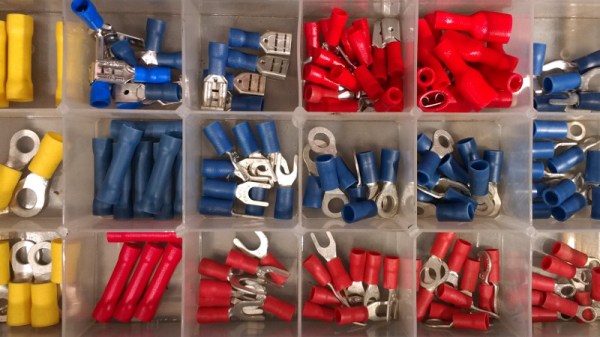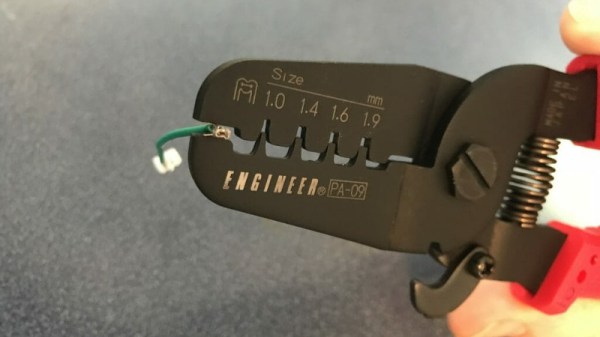We love upcycling around these parts — taking what would be a pile of rusty scrap and turning it into something useful — and this project from YouTuber [Hands on Table] is no different. Starting with a pair of solid looking sprockets, one big, one small, and some matching chain, a few lumps of roughly hewn steel plate were machined to form some additional parts. A concentric (rear mounted) plate was temporarily welded to the sprocket so matching radial slots could be milled, before it was removed. Next, the sprocket was machined on the inside to add a smooth edge for the crimping fingers (is that the correct term? We’re going with it!) to engage with.
These fingers started life as an off the shelf 3/8″ HSS tool bit, ground down by hand, to produce the desired crimping profile. A small piece of steel was welded on to each, to allow a small spring to act on the finger, enabling it to retract at the end of the crimping action. We did spot the steel plate being held in place with a small magnet, prior to welding. The heat from that would likely kill off the magnetic field in a short space of time, but they’re so cheap as to be disposable items anyway.
crimping profile. A small piece of steel was welded on to each, to allow a small spring to act on the finger, enabling it to retract at the end of the crimping action. We did spot the steel plate being held in place with a small magnet, prior to welding. The heat from that would likely kill off the magnetic field in a short space of time, but they’re so cheap as to be disposable items anyway.
A small ring rides on top of the assembly, bolted to the fixed rear plate. The prevents the crimping fingers from falling out . The fingers are constrained by the slots in the rear plate, so the result is that they can only move radially. As the big sprocket is rotated, they get progressively pushed towards the center, giving that nice, even crimping action. Extra mechanical advantage is provided by driving the small sprocket with a wrench. Super simple stuff, and by the looks of the device in action, pretty effective at crimping the hose fittings it was intended for.
Taking one thing and turning it into something else may well be the very essence of hacking. We’ve seen many hacky upcycling efforts, such as this bench disk sander built from a dryer machine motor. Of course, upcycling is not limited to machines, tools and electronic doodads. Here a trapper hat made out of an old skirt. And why not?

